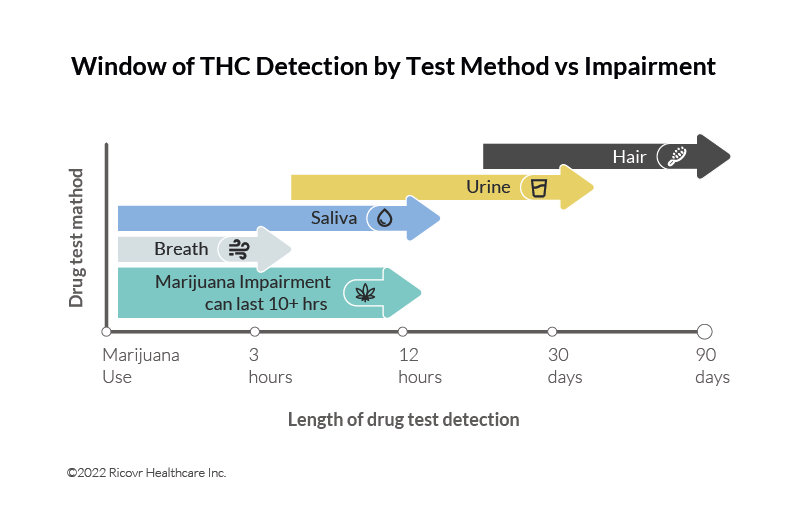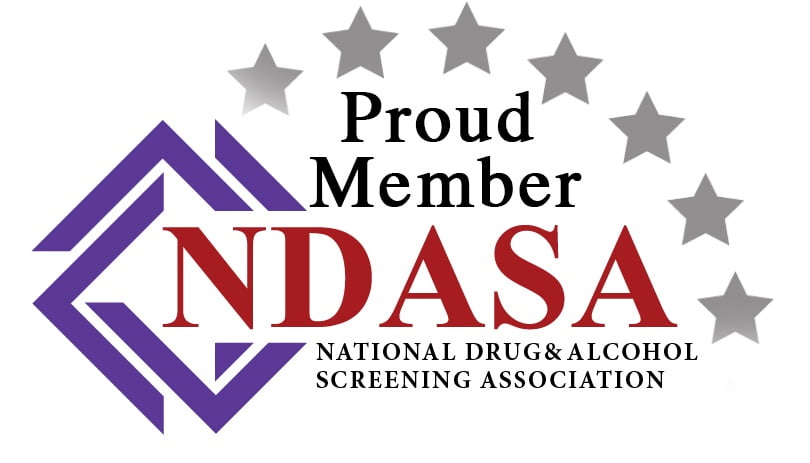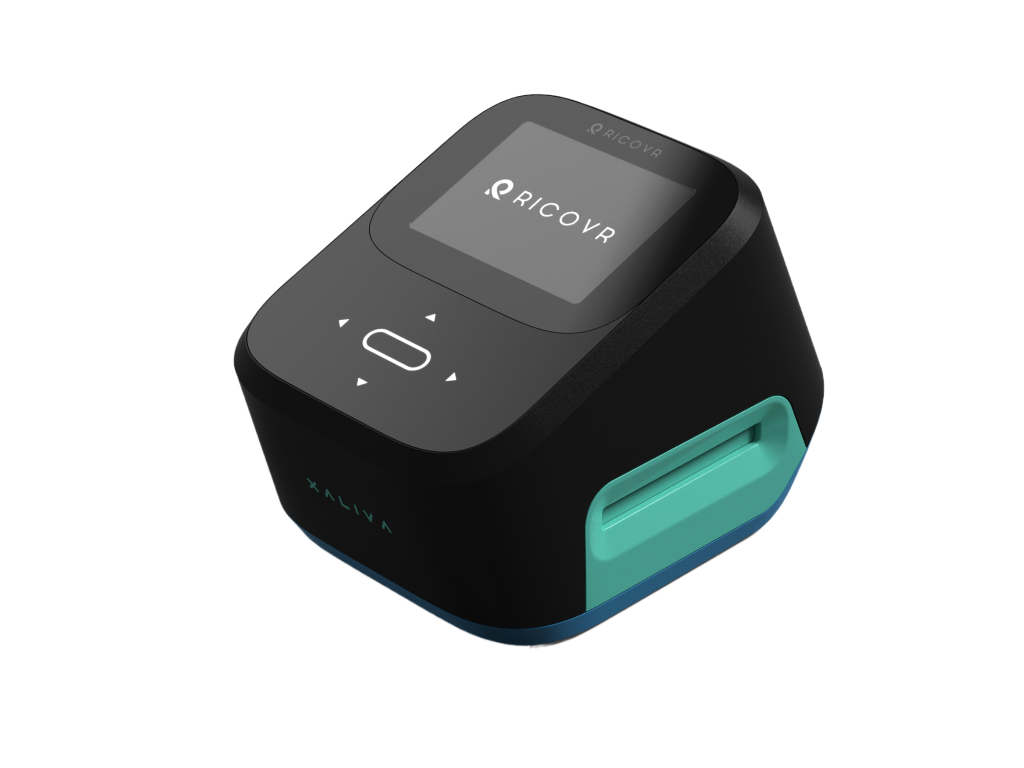By RICOVR Healthcare
Dr. Himanshu Bhatia, CEO and Founder, and Kyle Muse, CMO
Nov.1, 2021, last updated on April 20th, 2023
The current state of marijuana testing
There are over 50 million urine-based drug tests for marijuana conducted each year in the U.S.1 Urine tests have been endorsed by the Federal Government through Health & Human Services (HHS) since the 80s, which means that they are used by the Department of Transportation (DOT), among other agencies, to drug test regulated industries such as commercial trucking. It is also a standard of practice for companies with employer drug testing policies in place.
Issues with urine-based marijuana testing
There are two main issues with current urine-based marijuana drug tests – adulteration and the length of detection time in comparison to the window of impairment.
Adulteration refers to an individual cheating on a urine test, which can be easily accomplished as the tests are generally not supervised by a third party. The subject can therefore purchase fake urine or use a clean sample from someone else to bypass the test. The adulteration issues are demonstrated by lower urine positivity rates for marijuana when compared to increasing positivity rates among saliva-based tests. In 2020, marijuana positivity increased only 16.1% for urine tests versus 35% for saliva-based tests.2
The length of detection time in comparison to the window of impairment is another major issue. It refers to the amount of time that marijuana is detected in urine from a drug test and can range from a few days to 30 days for marijuana.3 The window of impairment, on the other hand, refers to the length of time marijuana’s psychoactive properties negatively affects the user and creates a “high.” The most recent study from Neuroscience & Behavioral Reviews suggests that cannabis impairment can last 3 to 10 hours,4 making urine-based testing ineffective and potentially unfair, especially in the 21 states that allow legal marijuana for recreational purposes as well as other states where marijuana legalization has been progressing rapidly over the last year.
Why rapid saliva-based drug testing is the solution
Rapid saliva-based drug testing can be conducted on-site by taking a non-invasive sample from the donor’s mouth. The process can also be observed and supervised for the entire duration, making cheating of any kind, whether it is through the use of additives or synthetic samples, ineffective. What is more, rapid saliva-based marijuana testing effectively solves the problem of “shy bladder” or bathroom privacy concerns.

The length of detection time for rapid saliva-based drug testing more closely matches the potential window of impairment for cannabis. As depicted in Fig. 1, marijuana is detected in saliva for about 12 hours versus up to 30 days for urine, depending on THC cut-off level.3,5 This is a key difference for industries concerned with detecting recent use of marijuana and potential impairment at the workplace, making saliva the best option for employer drug testing.
In conclusion, rapid saliva testing is the best method for detecting recent marijuana use because it is fast, easy to use, accurate, donor-driven, and non-invasive. It provides reliable results that act as an effective deterrent to workplace cannabis use.
- https://www.ehstoday.com/safety/article/21904416/what-every-employer-should-know-about-drug-testing-in-the-workplace
- https://www.prnewswire.com/news-releases/marijuana-workforce-drug-test-positivity-continues-double-digit-increases-to-keep-overall-drug-positivity-rates-at-historically-high-levels-finds-latest-quest-diagnostics-drug-testing-index-analysis-301299762.html
- https://www.medicalnewstoday.com/articles/324315#marijuana-detection-windows
- https://www.sciencedirect.com/science/article/pii/S0149763421000178
- Lee, Dayong (2013). “Current Knowledge on Cannabinoids in Oral Fluid.” Drug Testing and Analysis. 6 (1–2): 88–111. doi:10.1002/dta.1514. PMC 4532432. PMID 23983217






